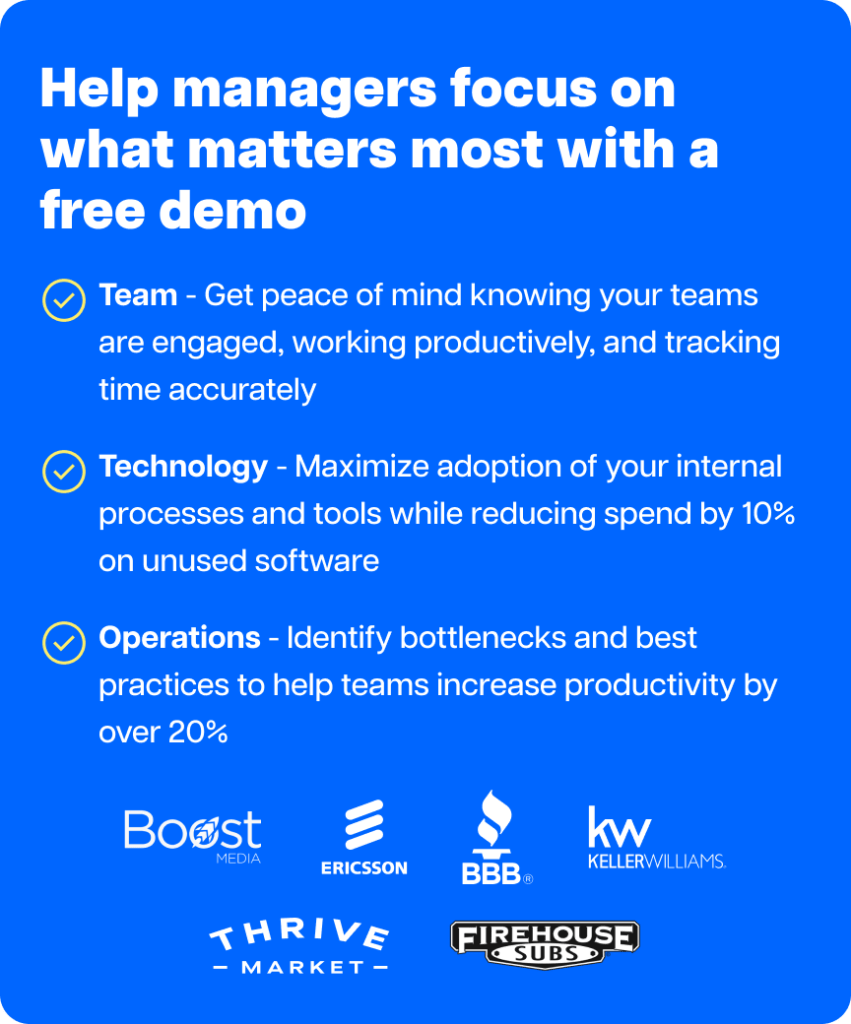The lack of a productive culture can signal serious problems for an organization, especially in the fast-paced and highly competitive Business Process Outsourcing (BPO) sector.
So if your organizational culture is unproductive, you’ll need to identify the reasons why and develop solutions to motivate your workforce.
In this article, we’ll look into the effects of an unproductive culture, discover the leading causes, and tell-tale signs indicating the lack of a productive culture.
We’ll also highlight the five characteristics of a productive culture, so you know what to aim for and offer handy tips for transforming your company culture.
Table of Contents
- 4 detrimental effects of an unproductive culture
- 3 main causes of an unproductive culture
- 5 tell-tale signs of an unproductive culture
- 5 characteristics of a productive culture
- 3 handy tips for overcoming an unproductive culture
Let’s dive in.
4 detrimental effects of an unproductive culture
A problematic culture often causes several internal issues that lead to larger problems down the line.
These effects are often a precursor to more severe problems:
1. Performance issues
Usually, the most noticeable effects of an unproductive culture relate to employee performance.
According to a report by Harvard Business Review, a toxic corporate culture costs American businesses $50 billion annually. It also decreased employee productivity by 38 percent. Even more alarmingly, 25% of employees in a toxic culture took their frustrations with the job out on clients – resulting in bad customer experiences.
Low productivity levels within your BPO company will negatively affect your bottom line as clients are likely to become dissatisfied with the quality and quantity of your team’s work. If this persists, your outsourcing firm may face a loss of clients as the customers move on to your competitor who is seemingly better prepared to deliver higher productivity levels.
2. Declining morale
As productivity declines, some employees may resent others they perceive as slacking off. Most often, a few employees have to pick up the slack for non-performing team members.
Employees will also lose confidence in company management when they see little chance for professional growth. If the company isn’t growing, neither will its employees.
Soon, you’ll notice a decline in employee morale. Instead of striving for excellence, employees will focus on getting through the day.
3. Employee absenteeism
When organizational cohesion crumbles, employees start taking more unscheduled time off. Having fewer employees impacts productivity and puts a strain on the team that’s present.
Employees also create partial shift absences by arriving late, leaving early, or taking longer breaks and lunches than allowed. Employees may also claim more personal, sick or vacation time.
In extreme cases, you may have to bring in contract and temporary employees to cover shifts, which results in additional costs for the organization.
Check out this article to discover how to reduce workplace absenteeism.
4. High employee turnover
An unproductive culture can also result in high attrition rates, which require you to continuously hire and train new employees to replace those that resign.
This is because unproductive cultures create workplace stress for employees wanting to do a good job. These employees may have to work longer hours or give up time off to meet deadlines and ensure that shifts are adequately staffed. Over time, you’ll lose the engagement of these high-performing employees as they become frustrated and resign.
Remember, an engaged employee is a good advocate for the company. But disengaged employees may badmouth the company, ruining its reputation among jobseekers. Eventually, you may also have trouble attracting new recruits.
Next, let’s explore the underlying causes of these effects.
3 main causes of an unproductive culture
Although no two organizations are the same, there are usually three leading causes of an unproductive culture:
1. Lack of employee training
A lack of proper training can lead to low productivity at work. In turn, employees may be unable to meet critical project milestones. Adequately trained employees can perform their tasks with little to no supervision and exhibit competence in every aspect of their job.
Often, higher-performing employees will have to correct the mistakes of the under-trained employees. If these employees can’t complete their work on time, it will impact productivity company-wide.
Ensuring every employee has the appropriate training to handle a project is the key to eliminating this problem.
Want to know about call center training? Discover 8 strategies to empower your agents.
2. Ineffective management and supervision
Whether you have a top-down or more fluid organization, you still need effective managers and team leaders. Managers without the ability to motivate their employees and keep them performing at the highest level can cause low productivity at work.
Poor communication, extreme micromanagement, and failure to reward a job well done are some of the characteristics of poor management.
An employee with low productivity can signal that your management needs to be evaluated. Managers may not have the appropriate training to lead and motivate employees. Company leaders must identify problem spots in the management/employee relationship and make corrections.
3. Problematic organizational structure
In fast-paced and highly competitive outsourcing industries, productivity often suffers when the business’s organizational structure remains centralized.
Agents can’t respond immediately and make key decisions independently, having to vet everything through the hierarchical chain. This takes time and slows productivity.
In dynamic industries, if senior leaders aren’t willing to relinquish some control, it can inhibit company growth. Typically, small businesses that fail to make this shift don’t progress beyond the small business level. This can cause the company problems attracting top talent and retaining employees.
Does your organizations culture warrant some concern? Here’s how you can identify a problematic culture.
5 tell-tale signs of an unproductive culture
It’s important to proactively recognize the signs of poor company culture and adjust operations accordingly.
Here’s what to look out for in an unproductive culture:
- Employee idle time outweighs their productive time.
- Your team frequently misses deadlines – jeopardizing client retention.
- Employees blame others for their mistakes or offer flimsy excuses, impacting work quality.
- There are many unhappy employees that are generally negative. This results in gossip, slander, combativeness and toxicity in the workplace.
- Shifts are commonly understaffed due to high absenteeism and tardiness.
Now, let’s look at the characteristics of a productive culture.
5 characteristics of a productive culture
A positive workplace culture improves teamwork, raises morale, increases productivity and efficiency, and enhances employee retention.
When there’s less stress in the workplace, employee satisfaction, collaboration, and work performance are all enhanced when there’s a strong culture. Here are some other notable characteristics:
- A productive and strong culture has high levels of efficiency and performance, which helps with productivity, client retention, and revenue growth.
- Employees communicate and collaborate efficiently with supervisors, managers, clients, and each other. They also participate in team building initiatives.
- The organization offers employees opportunities for growth as the organization itself grows.
- Employee recognition for outstanding performance. Training opportunities are also identified for underperforming employees.
- Employees display a strong sense of purpose and core values of the organization while taking ownership of their work.
Next, let’s see how you can make your organization’s culture more productive.
3 handy tips for overcoming an unproductive culture
If you want to improve your organization’s culture, here are three simple factors to keep in mind:
1. Focus on promoting a positive work culture
To promote a healthy culture in your organization, you’ll need to prioritize productivity. That means proactively focusing on ways to make the workplace more positive, supportive, and productive.
Here’s how you can do that:
A. Share your vision
For proactive learning, it is vital to have a shared vision that provides focus and direction. This, in turn, fosters energy, commitment, and purpose within an organization. Sharing your vision will give the organization direction, ensuring everyone’s working towards common goals and company values.
B. Be clear about roles and responsibilities
It’s critical to define each employee’s role, their responsibilities and success criteria within the team. This helps ensure that everyone understands what’s expected of them and the standard of work required.
C. Provide opportunities for growth and development
Employees need to feel valued and appreciated, or they won’t take full ownership of their productivity. Part of feeling valued in an organization includes having a path for growth and success within the organization. If a high-performing employee doesn’t see opportunities to grow, they’re likely to jump ship as soon as they get another offer.
To ensure happy employees, business leaders should promote internally and offer ongoing training opportunities.
D. Facilitate collaboration
As the company leader, it’s important to facilitate easy, effective communication and collaboration among your teams. Collaborative communication creates a more efficient and flexible working environment.
You could encourage regular meetings and catch-ups between employees and management. You should also offer easy-to-use communication tools.
Here are a few popular ones:
- Slack for direct messaging.
- Zoom for video conferencing.
- Proofhub for file sharing and project management.
Check out this post for more on effective communication, including tips and tools.
E. Provide regular feedback
Offering each team member regular feedback on their performance helps boost employee engagement and productivity. It offers them clear goals and milestones, enabling them to evaluate their own performance.
Engaged employees are more proactive, are willing to go the extra mile, and usually have a good working relationship with company leadership. The opposite can be expected from disengaged employees.
2. Track the key metrics during quality assurance
The results of tracking metrics can indicate where problems lie that contribute to a poor company culture. You can then use this data to implement a culture change and improve productivity.
For your BPO company, here are a few key metrics to consider tracking:
- Attendance and schedule adherence: Organizations that implement effective timekeeping strategies help employees keep up with project goals and deadlines and boost client satisfaction.
- Net promoter score (NPS): This is a customer loyalty and satisfaction measurement taken from asking customers how likely they are to recommend the company to others. This indicates whether customers are satisfied with the service they received.
- Average handle time: This indicates the average duration of the entire customer call transaction, from the time the customer initiates the call to the end, including hold times, transfers, and after-call work.
For more information, check out these related posts :
3. Use Time Doctor to foster a productive and positive culture
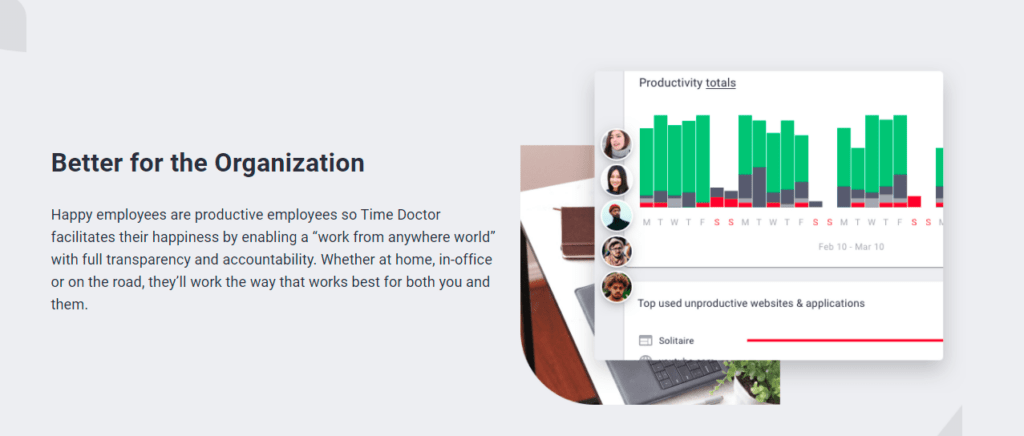
Time Doctor is a feature-rich yet employee-friendly time tracking and productivity management software. You can use it to measure agent performance and help them work more productively. It’s used by small businesses like Thrive Market and larger corporations like Ericsson.
Whether your BPO company has a remote, hybrid, or in-office team, managing time, attendance, and productivity are the biggest concerns. Time Doctor offers the ultimate solution to these and many issues facing BPO service providers and can help your company gain a competitive advantage.
Here are a few benefits of using Time Doctor:
- Gain complete visibility into employees’ actions throughout the workday, even if they work remotely. This ensures accountability and transparency.
- Offer your clients accurate proof of work to improve client retention.
- It provides more flexibility for employees, helps them manage their time better, promotes their wellbeing and encourages a healthy work-life balance.
How Time Doctor helped Phoenix Virtual Solutions boost client retention and productivity
This offshore BPO headquartered in the Philippines wanted a way to increase visibility into their remote workforce. They also wanted to provide customers with precise, comprehensive data about the efficiency and output of their offshore teams.
With Time Doctor, Phoenix Virtual Solutions were able to offer their clients proof of work. This included evidence that their virtual healthcare assistants were performing their roles efficiently and optimizing their time.
For this BPO service provider, using Time Doctor increased customer satisfaction, retention, and acquisition.
The software’s user-friendly, accurate time tracking and reporting features enabled the company to accurately bill clients and process payroll. This led to improvements in the company’s profits.
Key features
Here are just a few of Time Doctor’s robust features that can help transform your business as well:
A. Flexible time tracking
Agents can track time using two convenient modes.
The interactive timer lets you track time for different tasks using a simple start/stop timer.
Your agents could track time spent on individual calls, various customer calls, time spent resolving queries off the phone, etc.
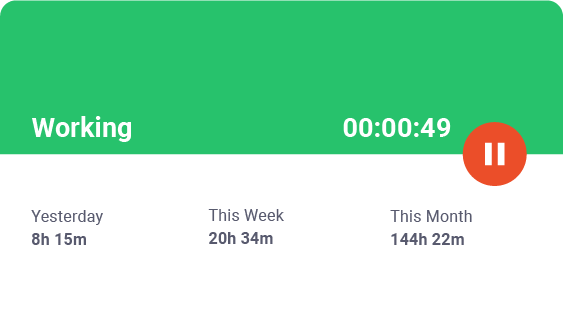
If you prefer to track time automatically, Time Doctor has an automatic mode that begins recording as soon as the agent turns on their computer.
The app will continue to track time quietly in the background without disrupting the agent’s work.
B. Work schedules
With the work schedule feature, managers and administrators can create work schedules and track attendance in real-time.
Here’s how you can simplify your scheduling and attendance tracking using Time Doctor:
- Add or modify a single shift or make bulk edits.
- Create flexible shifts for any period up to a week.
- Set different schedules for agents.
- Access detailed attendance reports.

C. Detailed productivity reports
Business leaders can attain actionable data on agent productivity with detailed reports.
Some of these reports include:
- Activity summary report: Shows an agent’s active and unproductive time, down to the second, for a specific time frame.
- Timeline report: View the time agents spend working and on breaks in daily and weekly formats.
- Web & app usage report: See which websites and apps agents spend their time on and for how long, in real-time to help identify distractions and time-wasters.
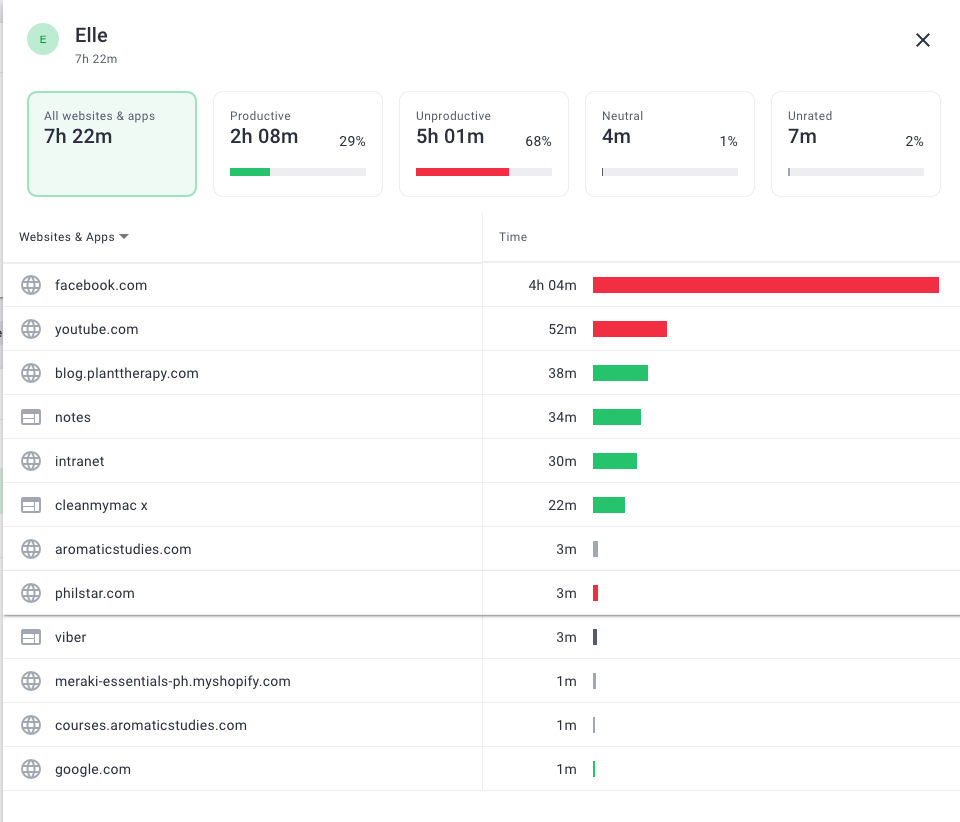
D. Optional screencasts
Once enabled, Time Doctor’s optional screencast feature lets you see exactly what agents’ are doing by taking screenshots of their screens at various intervals.
This feature can be enabled/disabled for each user.
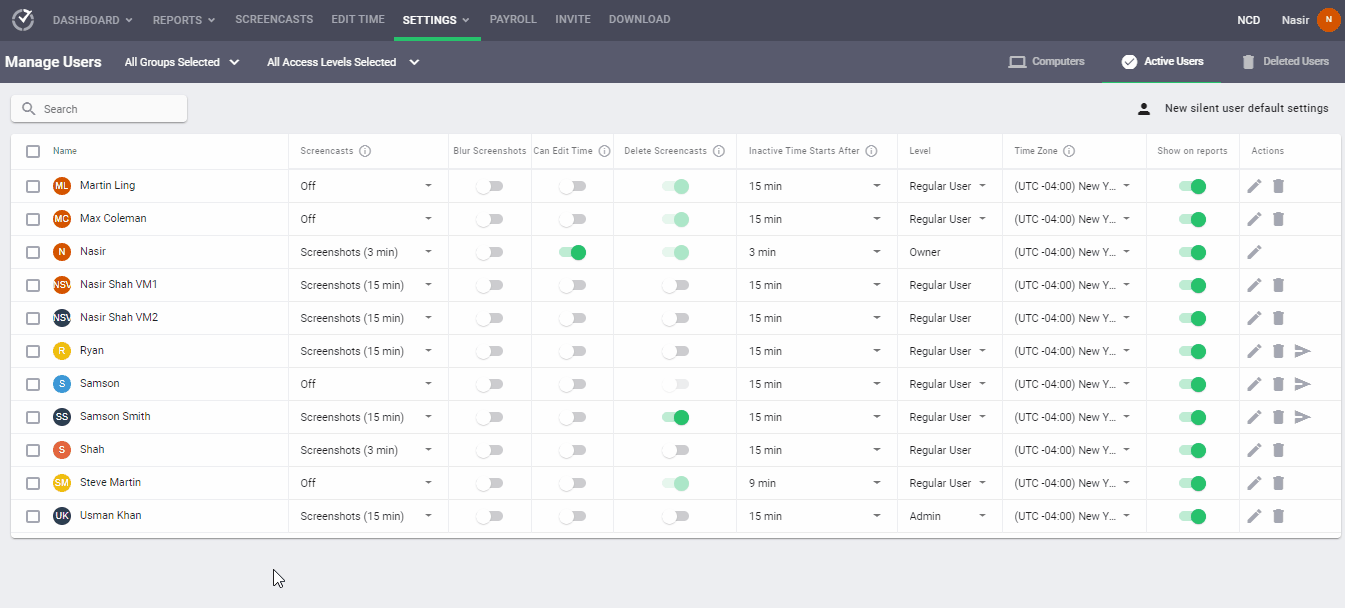
Note: The administrator can blur sensitive information in the screenshot to protect agents’ privacy.
E. Payroll
With Time Doctor’s payroll integration, human resources and payroll personnel can run accurate payroll reports based on tracked hours. They can then export these reports as a CSV file to Wise, Gusto, etc., for quick and easy payments.
You can also:
- Automate timesheets for faster payroll processing.
- Customize payroll for pay rates, pay period, currency type, and employment contract (salaried or hourly).
- Process payments for multiple employees at once.
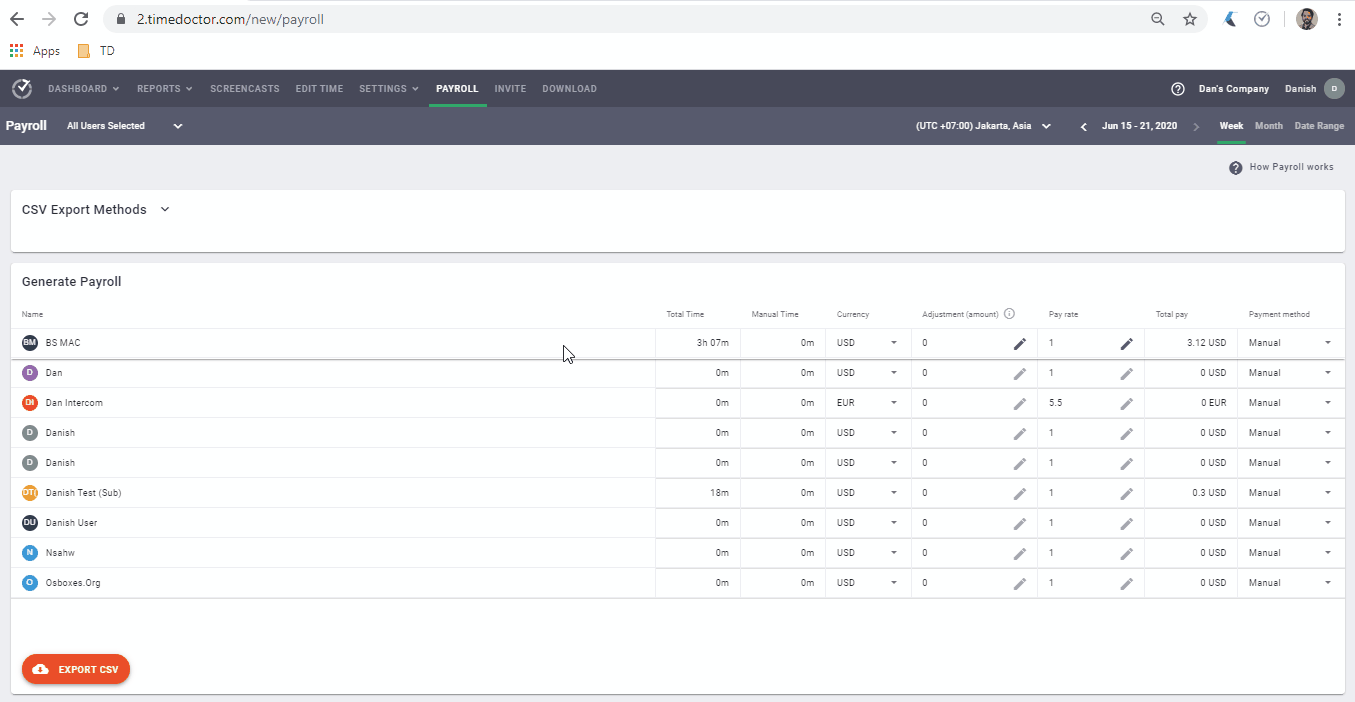
Check out all of Time Doctor’s powerful features here.
Pricing
Time Doctor’s paid plans start at $7/user per month and there’s a free 14-day trial (no credit card required).
Customer reviews
- G2: 4.4/5 (280+ reviews)
- Capterra: 4.5/5 (400+ reviews)
Final thoughts
The lack of a productive culture can have dire consequences for service-based businesses like BPO companies. Recognizing an unproductive culture, identifying the underlying causes, and addressing the problem at the root is critical.
Fortunately, you don’t have to go at this alone. You can use a robust tool like Time Doctor to precisely pinpoint productivity issues before they develop into a toxic culture.
With Time Doctor’s powerful attendance, performance management, and analytical features, you can boost your team’s productivity and transform your organization’s culture.
So why not sign up for Time Doctor’s 14-day free trial today!

Andy is a technology & marketing leader who has delivered award-winning and world-first experiences.

